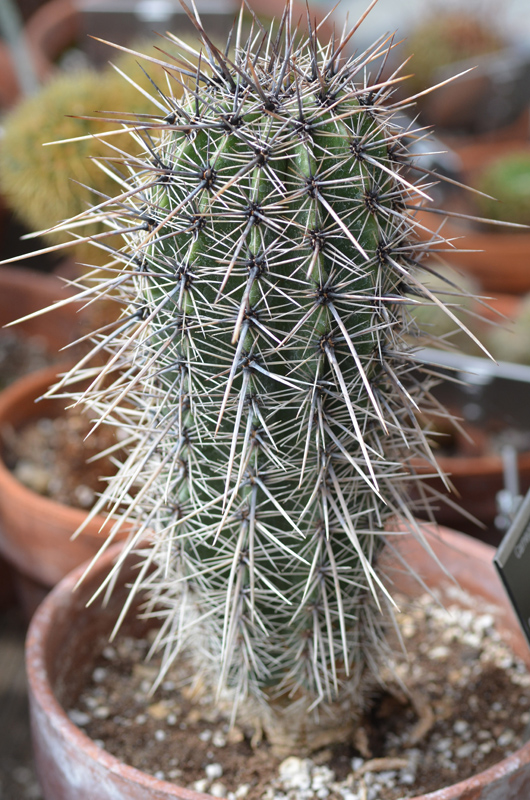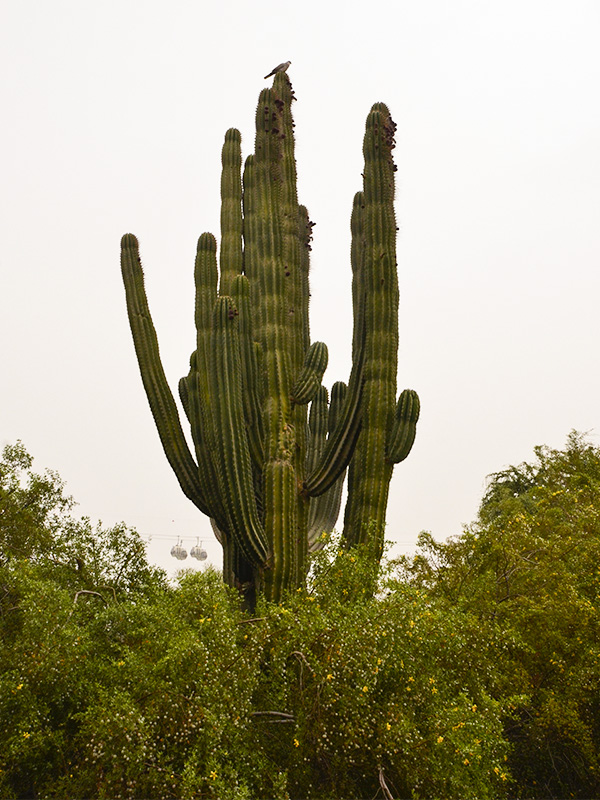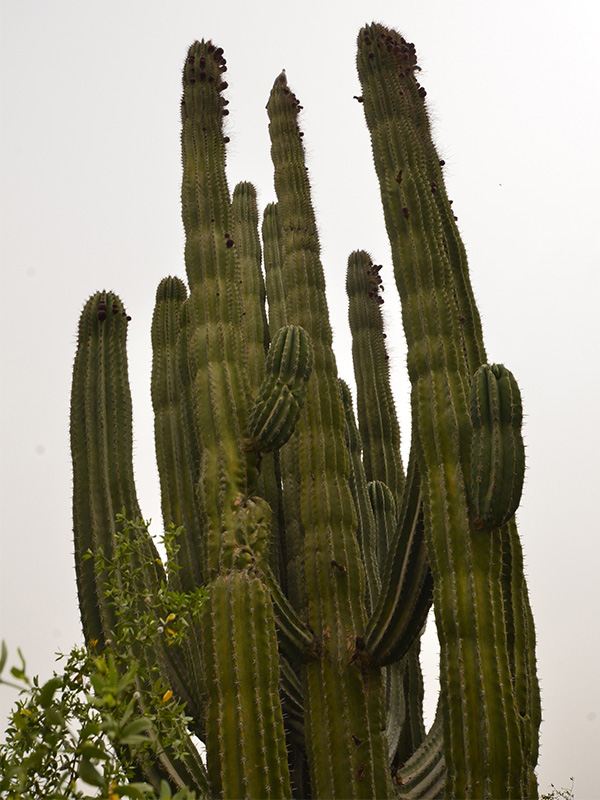| Shape | Upright and rounded. |
| Landscape | Desert gardens and container planting. |
| Propagation | Seed. |
| Cultivation | Full sun. Moist and well-drained soils with a pH of 6.1 - 7.8 (mildly acidic, neutral and mildly alkaline). Drought tolerant. |
| Notable Specimens | Desert Botanical Gardens, Phoenix, Arizona, United States of America. |
| Habitat | It is native to the Sonoran Desert in Arizona, United States of America and the Mexican state of Sonora. |
| Bark/Stem Description | The trunk bears dense, strong and thick spines. |
| Flower Description | The flowers open well after sunset and close in mid-afternoon. Flowers are self-incompatible. |
| Fruit Description | The fruit is 6 - 9 cm long and ripen in June. Each fruit contains 2000 seeds and sweet fleshy connective tissue. |
| Colour Description | The flowers are white. The fruit is red. |


